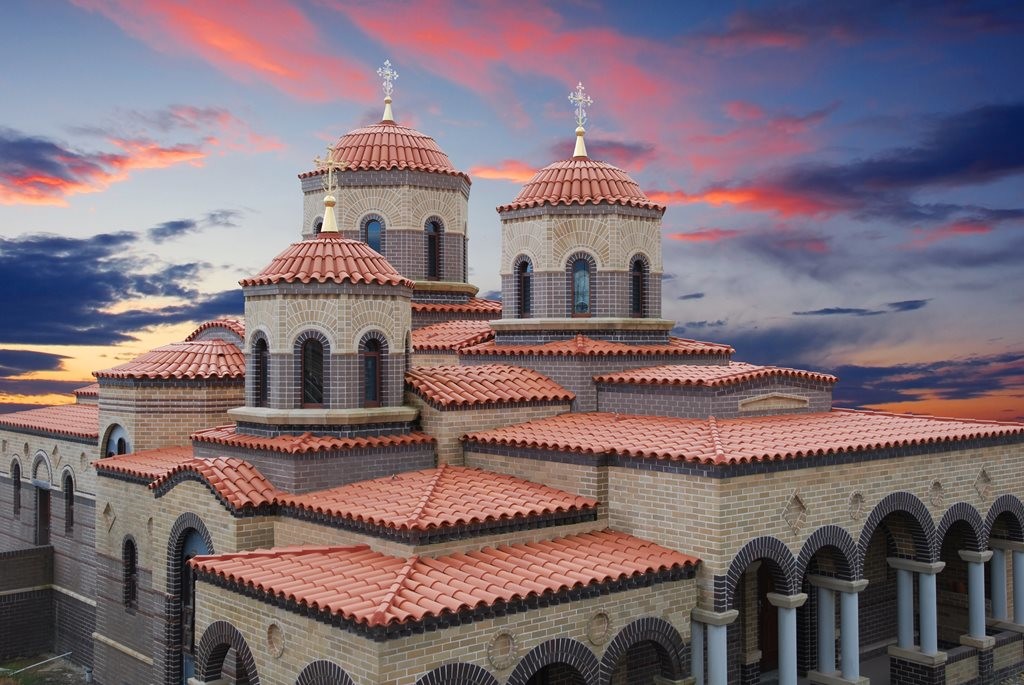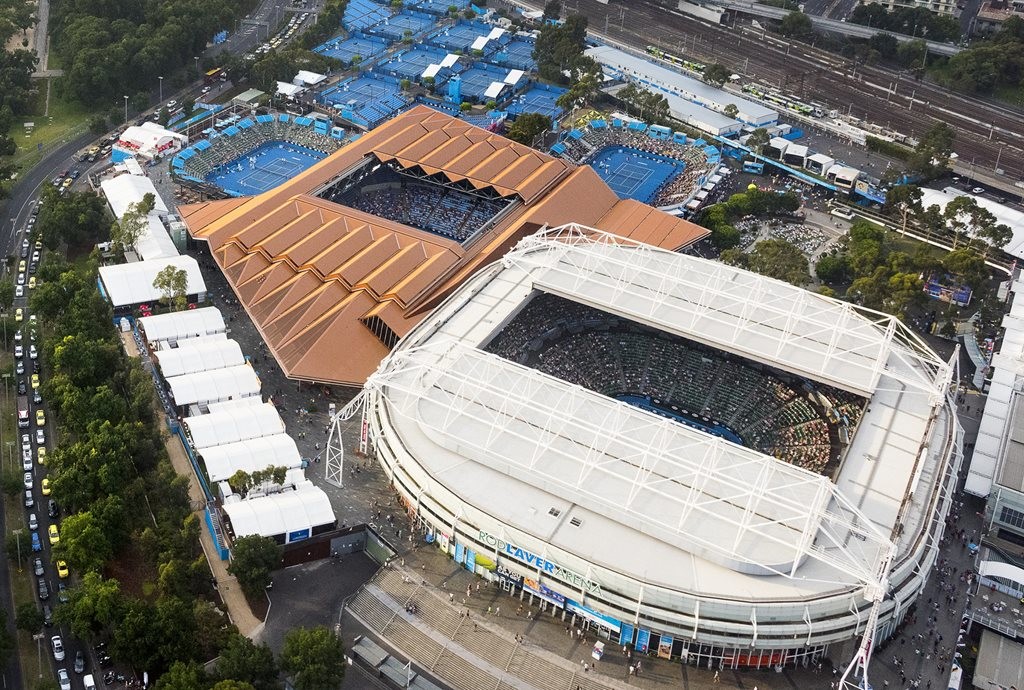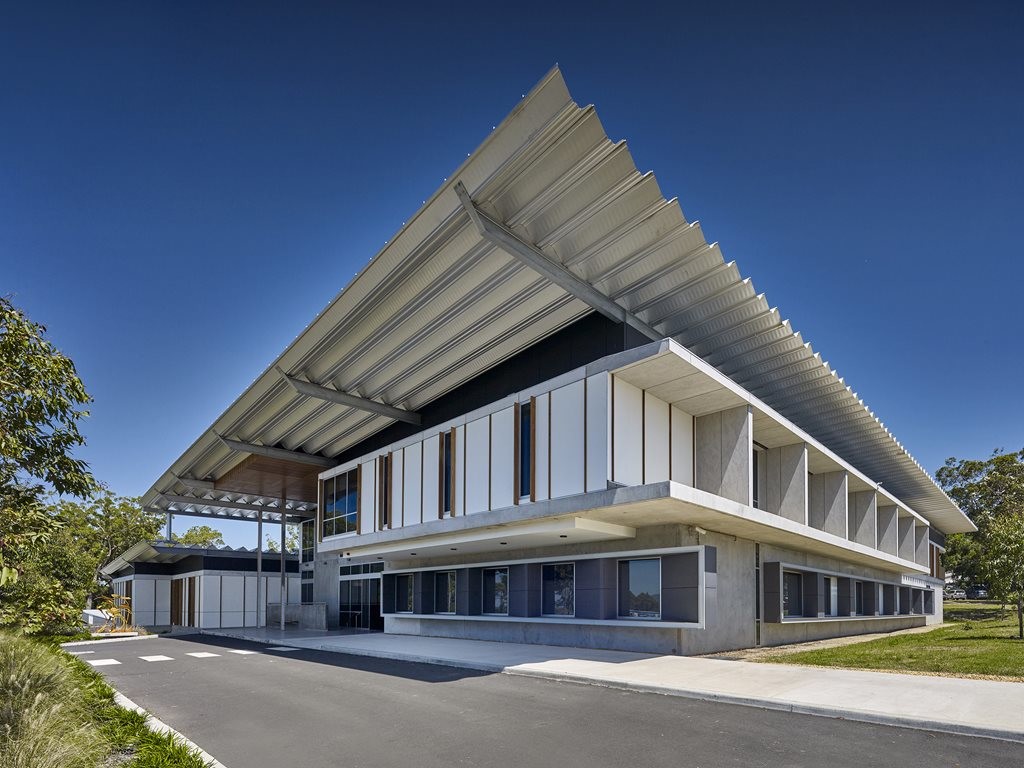Roofs do more than just protect the structure underneath; they are also integral to the functionality of a building.
Roofs can hide plant rooms, support photovoltaic arrays and solar evacuated tubes, capture rainwater and wind, house gardens, direct natural light and insulate a building—just to name a few.
Below is a list of projects with ‘fifth facades’ and that use roofs for more than just their protective nature. Each roof has a specific purpose and was designed to complement, improve or change the entire project outcome.
Read on to see why the architects chose them:

Product: Lysaght’s Colorbond KLIP-LOK 700 HI-STRENGTH
Why: Key to Terroir’s sustainability strategy at Club Maitland City was the new roof that worked as a ‘sustainability backpack’, providing rainwater harvesting, solar protection and containing new spaces and new services integrated with the residual building shell below.
The 5,000sqm of roof sheeting have a completely concealed fixing and the depth of the trays means it can deal with cross falls that the roofscape design generates.
KLIP-LOK fixing system allows roof sheets to be removed and replaced if future works below the roof are required. (Photography: Brett Boardman)

Product: ‘Roja La Escandella Curvado’ tiles available at Bristile Roofing
Why: The Pantanassa Monastery at Mangrove Mountain, about 90 minutes north of Sydney, is Australia’s first Greek Orthodox monastery produced in the ancient Byzantine style.
The whole church is a concrete shell and all the three dimensional shapes such as the domes and cross vaults were formed in either Styrofoam or sheet steel. The Styrofoam was created by a Newcastle boat builder and coated in fibreglass to resist the impact of the concrete when it was poured on top to avoid any deformation of the surface. The sheet steel was used to form simple shapes such as a half cylinder as it was cheaper and easy enough to manipulate. Terracotta half barrel tiles were then laid in an overlapping fashion and fixed on a wet bed of flexible mortar to avoid interior water ingress and resistance to mortar cracking.
For light: 50 Martin Place by Johnson Pilton Walker architects

Product: China Southern Glass triple-glazed units with an interlayer of expanded aluminium mesh.
Why: The new three storey glass dome on the roof of 50 Martin Place is more a fifth façade than a roof. It provides high levels of natural light deep into the building’s atrium and interior spaces that were previously trapped inside the building’s claustrophobic exterior envelope. The dome incorporates conference facilities, client meeting space and terraces overlooking Sydney's busy Martin Place. (Photography: Peter Bennetts)

Product: Lysaght’s Colorbond KLIP-LOK 700 HI-STRENGTH
Why: The new $366 million retractable roof at Melbourne’s Margaret Court Arena (MCA) is the fastest to close in Australia and comprises a series of vibrant “Copper Penny” Colourbond Metallic steel gable roofs, a colour chosen to reflect some of the traditional elements of Melbourne architecture, particularly the sandstone, zinc and copper of buildings along the Yarra River.
The roof is a unique system which sees only two downturned operable trusses, spanning the width of the MCA (on each end), supporting the bulk of the operable roof.
Each truss is connected to a 57m x 32m operable lateral panel which is joined to seven adjacent gable roofs sections that make up the bulk of the MCA roof. The whole structure is driven by drive bogies and has a tiny straight-line dimension of 1.25 m between the top of the operable roof panel and the top of the fixed roof. (Photography: John Gollings)

Product: Curved Fielders Kingklip
Why: The architects chose the curving trapezoidal roof form at St Barnabas to separate the different planes and purposes of the building, and provide different types of natural light to those spaces. The worship space at the back of the site faces north and is provided with diffuse light by sun catchers in its façade. The smaller curve in St Barnabas’ roof signals the centre of the building which is an intermediating space for the public and worship spheres. The light is directional and captured by a glazed crucifix under the curved form. (Image: FJMT)
For enduring reference: Shoalhaven Cancer Centre by HASSELL

Product: Aramax roofing
Why: HASSELL actively sought building components that reflected the landscape for the Shoalhaven Cancer Centre, but budget constraints forced the architects to look at inexpensive materials that could be used in an interesting way.
“External and internal materials are cost driven and the use of native timber, concrete, untreated galvanised steel and Aramax roofing blur the boundaries between the indoor clinical and respite areas and the Centre's bushland setting,” said the architects. (Photography Michael Nicholson)

Product: Colorbond Trimdeck in Woodland Grey and CSR Cemintel Barestone Cement Sheeting
Why: The townhouses were an open canvas for Duckbuild who combined CAD software and solar modelling with their own artistic flair to create what might be one of the most interesting new residences of the year. The material choice kept prices down while the angles and planes of the extruded boxes and sun shading portals gave the residence its uniqueness. (Photography: Michelle Williams)

